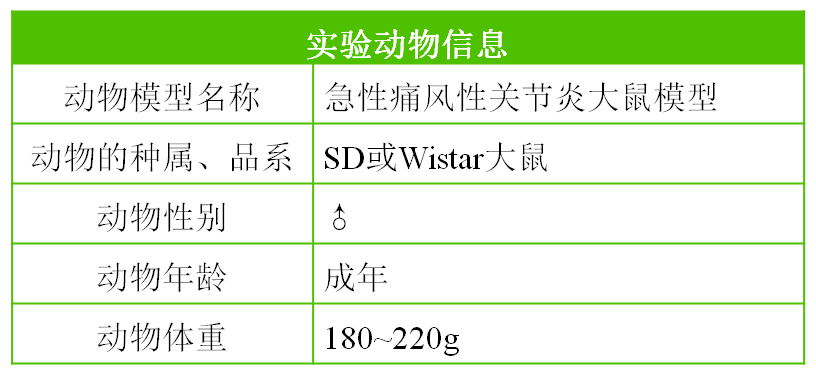Acute gouty arthritis rat model
Gouty arthritis (GA) is the most common manifestation of gout. It is currently widely believed that the precipitation of monosodium urate (MSU) crystals at the joint site is the fundamental cause of gouty arthritis. When MSU crystals deposit around the joint cavity, they can induce activation of systems such as neutrophils, monocytes, and mast cells. Through paracrine or autocrine secretion, various inflammatory neurotransmitters such as TNF - α, IL-1 β, IL-8, etc. are produced. These inflammatory factors secrete in large quantities, causing local vascular dilation, increased permeability, exudation, edema, fever, and other inflammatory reactions, playing an important role in the pathogenesis of gout. Therefore, the preparation of animal models of gouty arthritis is usually achieved by simulating the direct injection of the inflammatory neurotransmitter MSU solution into the joint cavity of the animal.

Observation indicators
Inflammatory manifestations such as increased number of inflammatory cells in synovial fluid, proliferation of synovial tissue, capillary congestion, and disordered arrangement of synovial cells.
Partial Results Display



